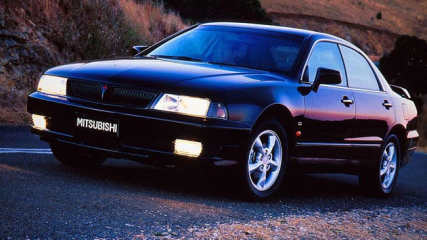Used Mitsubishi Magna review: 1999-2000
By Graham Smith · 02 Aug 2010
Despite being condemned over the years as being boring and bland the Mitsubishi Magna stands out as one that can deliver cheap, reliable motoring. If they had their critics, they also had their fans, and those who bought Magnas, like the TH, generally became hooked on them. The Magna is no longer on the market, but there are plenty of them still out there on the used car market, and they can make good buying.MODEL WATCHThe TH Magna was the third makeover of the third generation Magna first released in 1996. By the time the all-new Gen 3 model was launched the Magna had acquired a reputation for being a steady and sure choice, the sort of car appreciated by people nearing their dotage. But the new Magna was an attempt to rid itself of this baggage and broaden its appeal to younger buyers.Where previous models had been chunky with generously rounded curves the new model had sweeping lines and more athletic proportions. So sleek was its shape that it was the most aerodynamic car made in this country.It was wider and longer than the outgoing model with increased front and rear legroom and more boot space, but the sweeping roofline attracted quite a deal of criticism for its negative impact on headroom.The new Magna also featured frameless windows and slim B-pillars in an effort to create a more airy feeling inside, but it wasn't enough to quell the critics who slammed the grey trim and high waistline for making the cabin seem dull and generally depressing.When the TH update model arrived early in 1999 it boasted a more aggressive grille, revised rear, updated interiors, and new wheel covers and alloy wheels. Gone by then was the four-cylinder engine that had been offered in previous models and Magna buyers could only buy a V6.A 140 kW 3.0-litre single overhead camshaft V6 was available in the entry level Executive model, but the rest of the range boasted a 3.5- litre V6 that had performance peaks of 147 kW and 300 Nm.Buyers could choose between a five-speed manual and a four-speed auto, with most choosing the auto. As with previous models the final drive was through the front wheels.The TH also introduced a number of innovations to the local market. It was the first Australian-made car with ABS anti-lock brakes with Electronic Brakeforce distribution (EBD), and the first to offer Traction Control.It also had air-conditioning as standard, a trip computer and an integrated anti-theft alarm. The model line-up kicked off with the Executive, followed by the Advance, Altera LS and Sports.IN THE SHOPThere are few reports of troubles with the TH Magna, which backs up the claims that it's pretty well bulletproof. Most reported problems can be traced back to a lack of maintenance so check the service history of any car on sale. This can be neglected in cars as old as the TH as they can pass into the hands of owners who are sometimes unable to afford proper servicing.Remove the dipstick and take a look at the oil, if it's black and dirty take a closer look at the service record. You're likely to find oil leaks around the engine and these could require fixing for a roadworthy, so take them into consideration.Take note of the way the transmission shifts, particularly note any hesitation or reluctance to shift gears, and rule out any car that shows a problem in this area. Inspect the front driveshafts for damage to the rubber boots. Walk away if any damage is found. Not all engines in the TH range were LPG compatible, so make sure the engine in your chosen car is if you plan to convert it.IN A CRASHThe base Executive model didn't have airbags, but all other models in the TH range had dual front airbags. All boasted ABS anti-lock braking with the new feature of Electronic Brakeforce Distribution (EBD).AT THE PUMPMitsubishi claimed the 3.0-litre V6 models with do 6.6 L/100 km on the highway and 9.0 L/100 km around town; it also said those with the 3.5-litre V6 would do 11.0 L/100 km around town and 6.8 L/100 km on the open road. Road testers reported the 3.5-litre V6 would average 10-13 L/100 km.OWNER'S SAYOf all the cars Damien Hamilton and his wife have owned, and they include an HSV3800, a Nissan 200SX, a Toyota Corolla, three Toyota Camrys and two Toyota Aurions, the 1999 TH Mitsubishi Magna Advance they recently sold stood out for reliability. In the eight years they owned it they had it serviced by the book and didn't have to spend a cent on anything else. Everything from door seals to buttons to fuel economy was as good as new! The wear and tear was minimal on things like brakes and tyres, the tyres easily lasted over 100,000 km each time!! Admittedly, they say, the car was plain to look at but that was the only negative, in all other respects it was exceptional and it's a shame they are no longer made. In Damien's view Toyota's "bulletproof" reputation is unjustified, particularly when compared to Mitsubishi and the Magna.LOOK FOR. Sweeping looks. Bland interior. Good-sized boot. Smooth V6 engines. Good driver. Well-built and reliableTHE BOTTOM LINEGet past the name and find a strong, well-built, reliable and affordable car.









